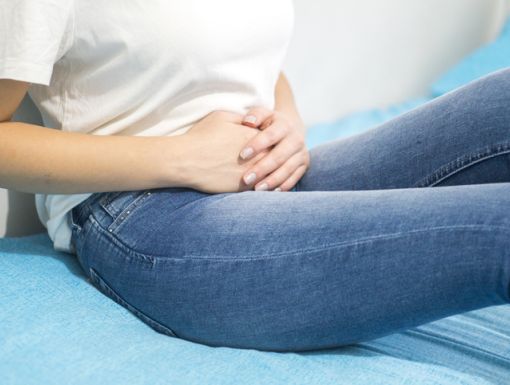
Can Hormone Changes During Menopause Cause UTIs?
Menopause is having a moment right now, with specialists being featured on talk shows and books coming out about "the change." And for good reason; this life stage often brings a wave of questions as the body undergoes transformations.
One common yet often overlooked change is more frequent urinary tract infections (UTIs). If unmanaged, UTIs can escalate from bothersome infections to complex medical concerns.
Why are UTIs common during menopause?
Menopause happens when the ovaries stop producing hormones like estrogen, causing menstrual cycles stop. This typically happens naturally between ages 40 and 50, but it can also start with surgical removal of the ovaries and some cancer treatments. During menopause, your body produces less estrogen, a hormone that helps maintain the health of tissues in the urinary tract and vagina. The pelvic region relies a lot on estrogen prior to menopause, and the drop in hormones can cause vaginal dryness and irritation, pelvic floor weakness, urinary incontinence, and an increased risk of urinary tract infections (UTIs). These cluster of symptoms are known as genitourinary syndrome of menopause.
This hormonal decline weakens the lining of the bladder and urethra, making them more susceptible to bacterial infections. Additionally, the reduced presence of "good bacteria" in the vagina can upset the natural balance, giving harmful bacteria a better chance to thrive.
The result? A heightened risk of UTIs, which, if left untreated, can lead to more severe infections and a need for antibiotics. The repetitive use of antibiotics, in turn, can cause gut discomfort, diarrhea, and long-term antibiotic resistance.
The good news is there are things menopausal/post-menopausal women can do to reduce the risk of UTIs.
How does the urinary system work?
First, let's cover the anatomy and how the process of urination usually works. The urinary tract refers to the organs that make and deliver urine. This includes:
- The kidneys that filter blood into urine
- The ureters that transport urine from the kidney to the bladder
- The bladder that holds urine until it's time to urinate
- The urethra that transports urine
Here's how we're supposed to urinate:
- Position yourself seated on a toilet or squatting all the way down to the ground
- Relax your pelvic floor to initiate a urine stream
- When the urine stream stops, wipe front to back to remove any excess moisture
Why do UTIs happen?
Now, let's talk about things can go wrong, leading to a UTI. A urinary tract infection occurs when bacteria, most commonly E. coli, enter the urethra and multiply in the bladder. Women are especially prone to UTIs due to the short length of the urethra, which makes it easier for bacteria to travel. Here are the common symptoms of a UTI to watch out for:
- Strong urge to urinate
- Burning sensation with urinating
- Frequent urination, often with only small amounts of urine produced
- Strong-smelling urine
- A red/pink/brown color to urine
- Lower belly heaviness or discomfort
How can you reduce the risk of UTIs during menopause?
- Wipe front to back. Fecal matter from around the anus should stay back there and not get swept up towards the vulva (everything between the labia, including the urethra). Wiping from front to back keeps everything clean.
- Drink plenty of fluids. Drinking plenty of fluids, especially water, helps keep your urine diluted and flushes your lower urinary tract, making it harder for bacteria to form.
- Change incontinence products frequently. If you use a panty liner or pad for urine leakage, make sure you change them during your trips to the bathroom. Using incontinence products is associated with increased risk of UTIs, likely due to the change in the bacterial environment around the vulva. Changing liners/pads frequently can keep the area around the urethra healthier.
- Practice the double-void technique to help completely empty the bladder. Sometimes, due to changes in the pelvic organs with age (like prolapse), it can be hard to empty the bladder completely in one go. Leftover urine sitting in the bladder too long can increase the risk of UTIs. The double-void technique helps by getting rid of any leftover urine. To perform the double-void technique, urinate as you usually would. Then, while seated on the toilet, move the hips side to side and lean forward. You may even stand up and sit back down on the toilet. Relax the pelvic floor again to initiate a urine stream and see if any more urine comes out.
- Urinate correctly. Sit down to pee and let it flow naturally. Avoid hovering over the toilet or forcing the urine out, as this can prevent your bladder from emptying fully
- Urinate following intimacy. Intimacy can expose the opening of the urethra to bacteria. Urinating afterward can help flush out the urethra.
- Pelvic floor therapy. If the pelvic floor muscles are not working correctly, it could increase your risk for UTIs and contribute to other menopause-associated symptoms like urine leakage and pelvic pain. Ask your doctor if pelvic floor physical therapy is right for you.
- Consider vaginal estrogen. Using vaginal estrogen has been shown to reduce the rates of UTIs in post-menopausal women. It is a cream applied to the vulva and/or inside the vagina, usually around two times per week. Vaginal estrogen works to reduce UTIs by reinforcing weakened tissue in the vagina/bladder, restoring the natural acidity of the vagina, supporting the immune system's ability to fight harmful bacteria, and promoting the growth of beneficial bacteria. It can also improve vaginal dryness that causes pain with intercourse and urinary symptoms associated with menopause. Use of vaginal estrogen has historically been viewed cautiously for those with a personal or family history of cancer, but recent research suggests that it does not increase the risk of breast cancer recurrence. It requires a prescription, so you would need to discuss whether vaginal estrogen is right for you with your physician.
Menopause is a natural part of lifespan, but the hormonal changes can make it a big adjustment. Use these techniques to reduce your risk of UTIs and embrace “the change.”



